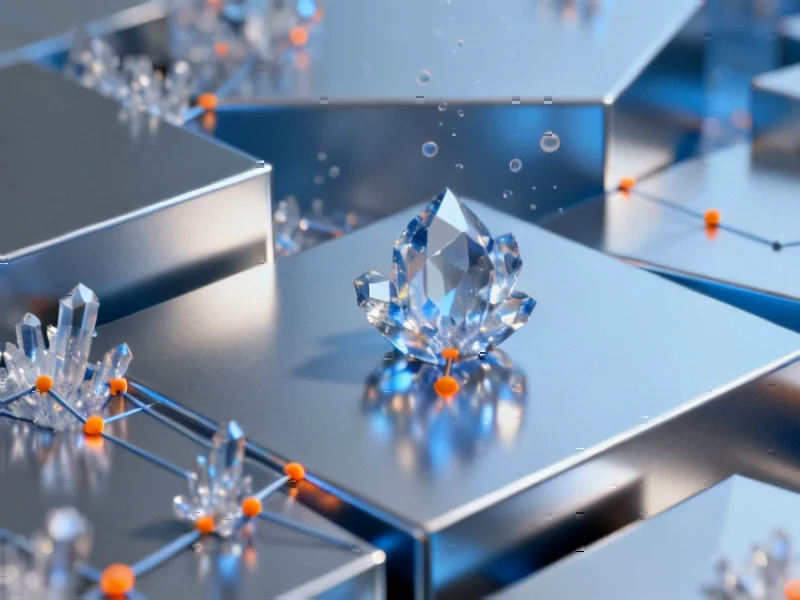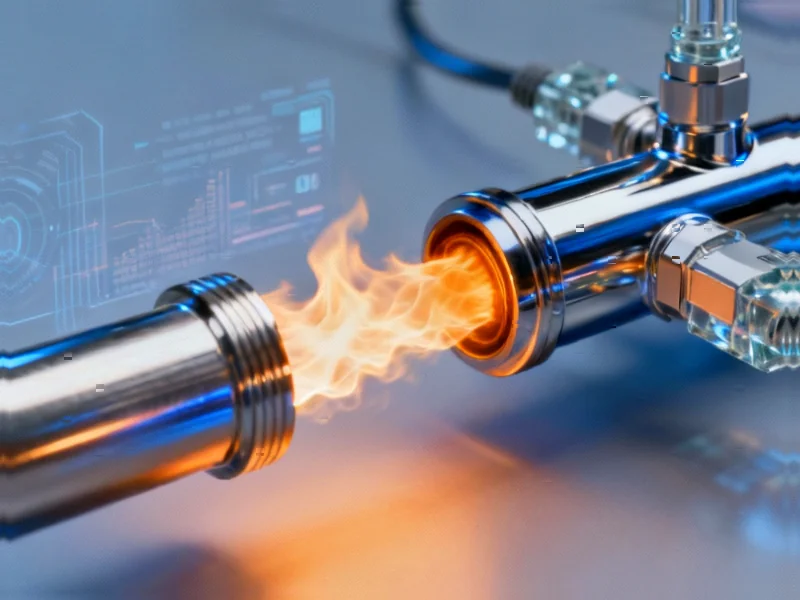Revolutionary Approach to Battery Research
Researchers have developed a groundbreaking methodology that uses machine learning to predict and control lithium deposition patterns in batteries, according to a recent study published in Nature Communications. The research team employed a data-driven approach combining cryo-TEM experiments with advanced computational models to analyze how solid electrolyte interphase (SEI) composition affects lithium deposition morphology (LDM). Sources indicate this represents a significant advancement in understanding battery interface chemistry.
Table of Contents
- Revolutionary Approach to Battery Research
- Three-Pronged Predictive Modeling
- Unified Morphology Indicator Breakthrough
- High-Accuracy Classification Model
- Electrolyte Composition Impact
- Dendritic Versus Spherical Growth Patterns
- Quantitative Design Guidelines
- Theoretical Underpinnings and Future Applications
- Practical Implications for Battery Development
Three-Pronged Predictive Modeling
The study established three distinct predictive models using ensemble learning methodologies and cross-validation, analysts suggest. These models underwent rigorous assessment for both intrinsic and post-hoc explainability, with features ranked based on their significance in determining outcomes. The report states that researchers correlated deposited area morphology with corresponding elemental contents including carbon, nitrogen, oxygen, fluorine, phosphorus, and sulfur obtained through energy-dispersive spectroscopy.
Unified Morphology Indicator Breakthrough
Researchers introduced a unified indicator of single-crystal lithium growth size, designated as λ, which represents the ratio of lithium’s longitudinal growth length to its horizontal growth width. According to reports, this parameter was validated through recursive feature elimination with cross-validation, where it emerged as the most significant among ten morphology indicators. The magnitude of λ is categorized into two distinct classes: dendritic lithium (λ > 1) and spherical lithium (λ ≤ 1), simplifying the interpretation of deposition patterns.
High-Accuracy Classification Model
An advanced classification model, referred to as the morphology classification (MC) model, was meticulously crafted with the primary goal of predicting lithium deposition morphology under specified SEI elemental compositions. The report states the MC model’s performance was convincingly attested by its receiver operating characteristic curve, boasting a notable area under the ROC curve of 0.92. Post-hoc explainability analysis revealed the top ten features most critical to LDM differentiation.
Electrolyte Composition Impact
The research demonstrates that electrolytes featuring LiPF tend to yield higher λ-values, suggestive of irregular lithium deposition, according to the analysis. Conversely, substitution with nitrogen-bearing salts such as LiFSI and LiTFSI, or the incorporation of NO anion additives into electrolytes, dramatically reduced λ-values, thereby transitioning lithium growth from dendritic to more desirable morphology. Sources indicate that in electrolytes fortified with FSI and NO, the decomposition of these anions fosters a chemically diverse SEI, promoting stable, uniform lithium deposition.
Dendritic Versus Spherical Growth Patterns
Statistical analyses underscore that dendritic λ-values cluster around 8-20, coinciding with generalized widths of dendritic lithium ranging from 0.1 to 1 μm. For spherical lithium deposition, researchers noted a striking level of uniformity and control in growth patterns, with the significance of generalized diameter of spherical lithium as an indicator of deposition uniformity being pivotal for maximizing coulombic efficiency in battery cycling. The report states that elements like nitrogen, fluorine, phosphorus, and sulfur positively contribute to larger spherical diameters, fostering uniform deposition.
Quantitative Design Guidelines
The research provides specific quantitative guidelines for selecting elemental contents to form target morphologies. According to reports, when the nitrogen-to-oxygen ratio exceeds 0.02 or nitrogen content is greater than 1.3, the formation of spherical lithium becomes more likely. If nitrogen content exceeds 2.6 or the nitrogen-to-oxygen ratio surpasses 0.03, particularly with oxygen below 81%, larger spherical lithium deposits will be produced. Conversely, conditions favoring dendritic lithium formation include carbon above 8, oxygen-to-carbon ratio below 11, and oxygen below 85%.
Theoretical Underpinnings and Future Applications
Theoretical calculations based on density functional theory were employed to elucidate the significant impact of inorganic components on lithium growth behavior. The study focused on six inorganic components typically found in SEI layers and evaluated their effectiveness in regulating LDM by examining their theoretical modulus, interfacial energy, bulk conductivity, interfacial migration energy barrier, and band gap. Sources indicate that LiF exhibited the highest interfacial energy, indicating the strongest ability to inhibit lithium dendrite growth, while LiN and LiP were found to exhibit high bulk conductivity.
Practical Implications for Battery Development
According to analysts, this research provides a comprehensive framework for designing optimized electrolytes and SEI compositions to control lithium deposition morphology. The ability to quantitatively predict deposition patterns using machine learning models and the unified λ parameter could significantly accelerate battery development cycles. The report suggests that these findings may lead to safer, more efficient lithium metal batteries with extended lifespans and improved performance characteristics.
Related Articles You May Find Interesting
- From resilience to antifragility: embracing a new era in cybersecurity
- The AI-Powered Browser Revolution: How Strawberry is Building the Future of Huma
- Milton Keynes Pioneers Autonomous Street Maintenance with £800K Robotics Initiat
- Bronto raise $14m seed round to modernise log management for the AI era
- Record Coal Surge Undermines Global Climate Goals Despite Renewable Energy Boom
References & Further Reading
This article draws from multiple authoritative sources. For more information, please consult:
- http://en.wikipedia.org/wiki/Correlation
- http://en.wikipedia.org/wiki/Science,_technology,_engineering,_and_mathematics
- http://en.wikipedia.org/wiki/Lithium_fluoride
- http://en.wikipedia.org/wiki/Receiver_operating_characteristic
- http://en.wikipedia.org/wiki/Saitama_Seibu_Lions
This article aggregates information from publicly available sources. All trademarks and copyrights belong to their respective owners.
Note: Featured image is for illustrative purposes only and does not represent any specific product, service, or entity mentioned in this article.



